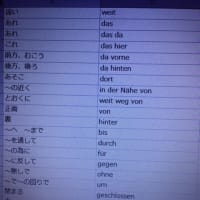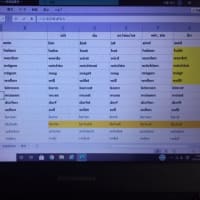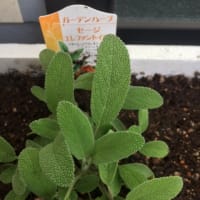4月6日 月曜日 快晴(6 :25時点)
249日/366日 英語学習249日目 目標設定までの残日数:117日
目標設定期日まで残り117日となってしまいました。
今日の名言・格言・諺(a saying ; a famous saying ; a well-known saying ; a proverb)
Life as if you were to die tomorrow. Lear as if you were to live forever.
Mahatma Gandhi
明日死ぬかのように生きよ。 永遠に生きるかのように学べ。
弱点の克服
語学を学ぶ場合自分の弱点を知ることは、上達への近道だと思っています。(弱点だらけですが(笑!!))
さて、皆さんは自分の弱点をどのように克服しているのでしょうか?
僕の場合は、一例ですが、次の様に、問題を作って解いています。
The definite article and the indefinite article及び a prepositionは特に曲者です。英語勉強中(フランス語、イタリア語、スペイン語でも同じことが言えますが)に特に注意する点は、定冠詞、不定冠詞、前置詞です。
何故?とその用途の意味が気になります。
皆さんはどうでしょうか?
下記の「article」に関する説明は、とてお参考になります。これは、毎日メールで届く、
フルーツフルイングリッシュの一問一答無料メルマガ vol.1825
の一部をピックアップしたものです。
このように、何故? こうだからとそのarticleの用途が説明できるようになれば、完ぺきですね。
その為には、疑問を抱き、自分で説明ができるようになることですね。かなりの時間と労力を要しますが、克服しなければ、英語を正確に書くことも、話すこともできませんね。

I can play the guitar.
これはtheがもっともしっくりくるでしょう。ギターやピアノなどは、どのギター、ピアノを取ってみても操作方法、演奏方法は画一です。つまり代表のtheを使うことで、ギター(全般)を引ける、ピアノを弾けるという意味を出すことができます。楽器=theなどで覚えてもいいかもしれません。
The whale is a large animal.
前回のテストに続き、これも最初のwhaleの前は「代表のthe」ですね。
次にanimalの前はどうなるかというと、くじらは1種の動物に過ぎず、animalという大きなグループの1構成要素にすぎません。なので、数ある中の1つでaとなります。
無冠詞ではanimalは「人間の獣性」という別の意味になってしまいますので不正解です。
a. I can fix the computer.
b. I can fix computers.
c. I can fix a computer.
a. あらかじめ故障したコンピュータが明確で、そのコンピュータが本当に直せる技術があるのであれば、I can fix the computer.と表現することができます。ただその場合はどちらかというと、I can fix this computer.に近い意味合いのものになります。
b. 無冠詞+加算名詞の複数形でコンピューター全般を意味します。しかしながらコンピュータには大小をはじめ、世に様々な種類、機種があるためこれをひとくくりにして修理できる人が本当にいるのか?という疑問は残る発言になります。
c. 現実的には、なんかしらコンピュータを直せる程度のニュアンスで[a]をつかうのがもっとも適切だと思われます。
ということで、自分なりに昨日の「What is 5S?」の一部で問題を自分なりに作ってみました。
53問です。正解率はどれくらいになるでしょうか?
On Friday's post I went over Lean initiatives from a high level, and how the elements of 5S are (1) integral part of (2) lean initiative. Lean thinking and methodologies are (3) important part of creating efficiency, increasing collaboration, and ultimately increasing customer satisfaction, all in (4) effort to increase your company's bottom line. Now, as stated (5) some of the feedback I have received (6) LinkedIn groups, Lean thinking is (7) culture mindset (8) your company. There are many tools to aid you (9) this, but if not adopted (10) leadership down, lean is not as effective. One of these tools and methodologies are (11) elements of 5S. If you are asking now, "What is 5S?" no worries, read the below, and you will be prepared to read (12) rest of my LEAN series (13) the next couple of weeks! As always, feel free to email me or connect with me on LinkedIn so we may discuss further or I can consult you on how to make your facility more lean.
What is 5S?
If you are sitting there wondering what is 5s or what makes (14) the elements of 5s, don't fret, I will explain each (15) detail below:
What is 5S: (16)
(16) is (17) identification of (18) most successful physical organization of (19) workplace. It (be 活用 20) variously defined as (16), Systematization or Simplify. It is the series of steps (21) which we identify things which are being held (22) the workplace when they shouldn't, or are being held in (23) the wrong place. Put simply, we may identify a large area devoted (24) tools or gauges, some of which are needed regularly and some used infrequently. This brings all sorts of problems, including:
• Operators unable to find the item they need, being unable to see wood for trees. The time spent searching is (25) waste and if we only held (26)items needed regularly (27) prominent position we (will 28) save time.
• Quality issues when gauges are not calibrated (29) time because too many are held.
• Safety issues when people fall (30) things.
• Lockers and racking cluttering the workplace making it hard to move around or to see each other and communicate.
We have to eliminate excess materials and (work-in-process), WIP. We should see inventory and WIP reduction as part of (31) implementation of the lean approach or as (32) element of 5S. Excess materials and inventory, are in fact, wastes. The answer is that keeping inventory and WIP to a minimum is simply (33) good practice using common sense.
(34) major element of Sort is simply (35) critical, objective look at the area. Involving cross-functional teams, or looking at each other's areas, is (36) first step. People tend to be blind to failings (37) their own work place and a fresh pair of eyes are useful.
(38) element of (39) standard approach is 'red tagging' where items are given (40) tag which says what the item is, which location it is (41), and when it was identified (42) this location. We then leave (43) area for (44) while and (45) using the item notes this. We go back some time later and can readily identify things that haven't moved, or been used. Items which have not been used can then potentially be disposed of in that area. As (46) first pass we should perhaps create (47) quarantine area before throwing items away, selling them or reworking them into something else. (48) items may be deemed necessary, but used infrequently and so an alternative location can be found. If the operator needs a particular tool only once or twice (49) a month then (50) short walk is not (51) problem, especially if (52) space saved (53) the workbench helps to make the workplace more productive, or helps address quality issues.
249日/366日 英語学習249日目 目標設定までの残日数:117日
目標設定期日まで残り117日となってしまいました。
今日の名言・格言・諺(a saying ; a famous saying ; a well-known saying ; a proverb)
Life as if you were to die tomorrow. Lear as if you were to live forever.
Mahatma Gandhi
明日死ぬかのように生きよ。 永遠に生きるかのように学べ。
弱点の克服
語学を学ぶ場合自分の弱点を知ることは、上達への近道だと思っています。(弱点だらけですが(笑!!))
さて、皆さんは自分の弱点をどのように克服しているのでしょうか?
僕の場合は、一例ですが、次の様に、問題を作って解いています。
The definite article and the indefinite article及び a prepositionは特に曲者です。英語勉強中(フランス語、イタリア語、スペイン語でも同じことが言えますが)に特に注意する点は、定冠詞、不定冠詞、前置詞です。
何故?とその用途の意味が気になります。
皆さんはどうでしょうか?
下記の「article」に関する説明は、とてお参考になります。これは、毎日メールで届く、
フルーツフルイングリッシュの一問一答無料メルマガ vol.1825
の一部をピックアップしたものです。
このように、何故? こうだからとそのarticleの用途が説明できるようになれば、完ぺきですね。
その為には、疑問を抱き、自分で説明ができるようになることですね。かなりの時間と労力を要しますが、克服しなければ、英語を正確に書くことも、話すこともできませんね。

I can play the guitar.
これはtheがもっともしっくりくるでしょう。ギターやピアノなどは、どのギター、ピアノを取ってみても操作方法、演奏方法は画一です。つまり代表のtheを使うことで、ギター(全般)を引ける、ピアノを弾けるという意味を出すことができます。楽器=theなどで覚えてもいいかもしれません。
The whale is a large animal.
前回のテストに続き、これも最初のwhaleの前は「代表のthe」ですね。
次にanimalの前はどうなるかというと、くじらは1種の動物に過ぎず、animalという大きなグループの1構成要素にすぎません。なので、数ある中の1つでaとなります。
無冠詞ではanimalは「人間の獣性」という別の意味になってしまいますので不正解です。
a. I can fix the computer.
b. I can fix computers.
c. I can fix a computer.
a. あらかじめ故障したコンピュータが明確で、そのコンピュータが本当に直せる技術があるのであれば、I can fix the computer.と表現することができます。ただその場合はどちらかというと、I can fix this computer.に近い意味合いのものになります。
b. 無冠詞+加算名詞の複数形でコンピューター全般を意味します。しかしながらコンピュータには大小をはじめ、世に様々な種類、機種があるためこれをひとくくりにして修理できる人が本当にいるのか?という疑問は残る発言になります。
c. 現実的には、なんかしらコンピュータを直せる程度のニュアンスで[a]をつかうのがもっとも適切だと思われます。
ということで、自分なりに昨日の「What is 5S?」の一部で問題を自分なりに作ってみました。
53問です。正解率はどれくらいになるでしょうか?
On Friday's post I went over Lean initiatives from a high level, and how the elements of 5S are (1) integral part of (2) lean initiative. Lean thinking and methodologies are (3) important part of creating efficiency, increasing collaboration, and ultimately increasing customer satisfaction, all in (4) effort to increase your company's bottom line. Now, as stated (5) some of the feedback I have received (6) LinkedIn groups, Lean thinking is (7) culture mindset (8) your company. There are many tools to aid you (9) this, but if not adopted (10) leadership down, lean is not as effective. One of these tools and methodologies are (11) elements of 5S. If you are asking now, "What is 5S?" no worries, read the below, and you will be prepared to read (12) rest of my LEAN series (13) the next couple of weeks! As always, feel free to email me or connect with me on LinkedIn so we may discuss further or I can consult you on how to make your facility more lean.
What is 5S?
If you are sitting there wondering what is 5s or what makes (14) the elements of 5s, don't fret, I will explain each (15) detail below:
What is 5S: (16)
(16) is (17) identification of (18) most successful physical organization of (19) workplace. It (be 活用 20) variously defined as (16), Systematization or Simplify. It is the series of steps (21) which we identify things which are being held (22) the workplace when they shouldn't, or are being held in (23) the wrong place. Put simply, we may identify a large area devoted (24) tools or gauges, some of which are needed regularly and some used infrequently. This brings all sorts of problems, including:
• Operators unable to find the item they need, being unable to see wood for trees. The time spent searching is (25) waste and if we only held (26)items needed regularly (27) prominent position we (will 28) save time.
• Quality issues when gauges are not calibrated (29) time because too many are held.
• Safety issues when people fall (30) things.
• Lockers and racking cluttering the workplace making it hard to move around or to see each other and communicate.
We have to eliminate excess materials and (work-in-process), WIP. We should see inventory and WIP reduction as part of (31) implementation of the lean approach or as (32) element of 5S. Excess materials and inventory, are in fact, wastes. The answer is that keeping inventory and WIP to a minimum is simply (33) good practice using common sense.
(34) major element of Sort is simply (35) critical, objective look at the area. Involving cross-functional teams, or looking at each other's areas, is (36) first step. People tend to be blind to failings (37) their own work place and a fresh pair of eyes are useful.
(38) element of (39) standard approach is 'red tagging' where items are given (40) tag which says what the item is, which location it is (41), and when it was identified (42) this location. We then leave (43) area for (44) while and (45) using the item notes this. We go back some time later and can readily identify things that haven't moved, or been used. Items which have not been used can then potentially be disposed of in that area. As (46) first pass we should perhaps create (47) quarantine area before throwing items away, selling them or reworking them into something else. (48) items may be deemed necessary, but used infrequently and so an alternative location can be found. If the operator needs a particular tool only once or twice (49) a month then (50) short walk is not (51) problem, especially if (52) space saved (53) the workbench helps to make the workplace more productive, or helps address quality issues.




















※コメント投稿者のブログIDはブログ作成者のみに通知されます